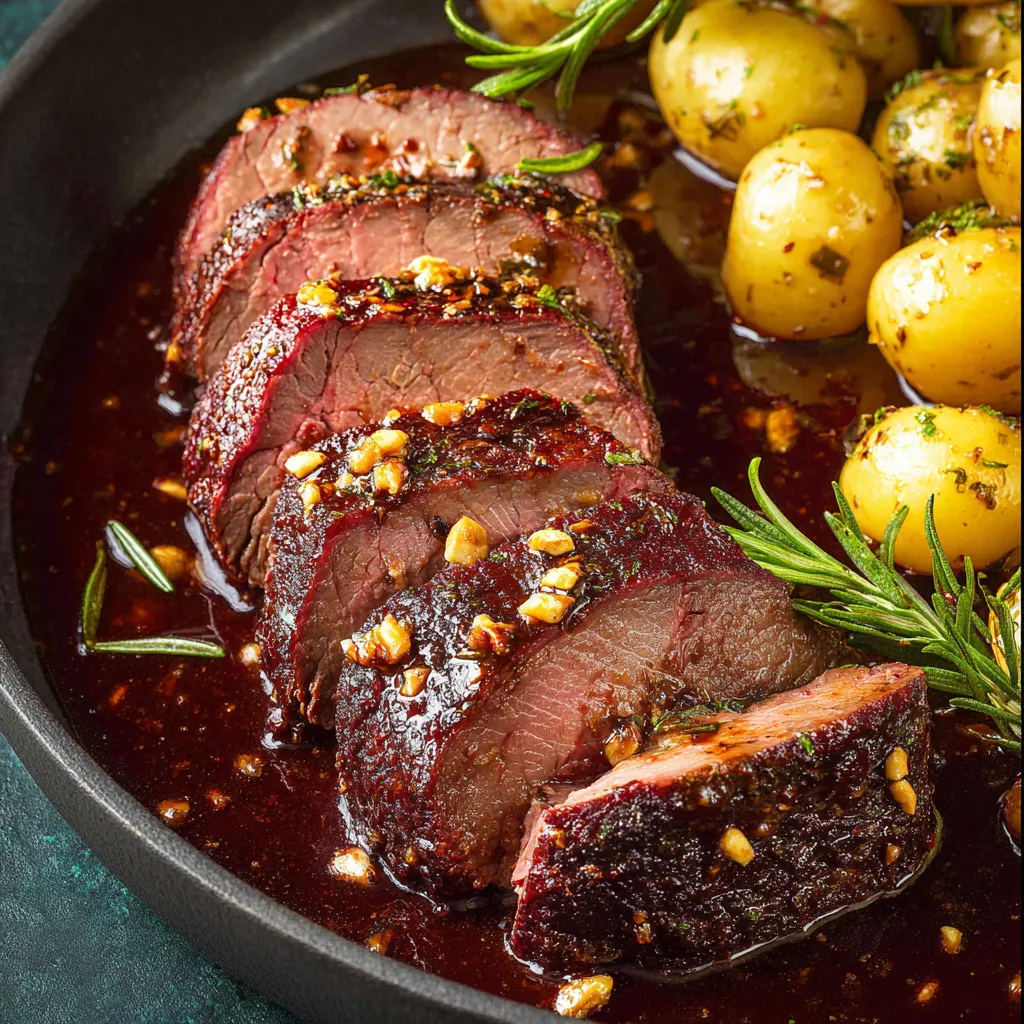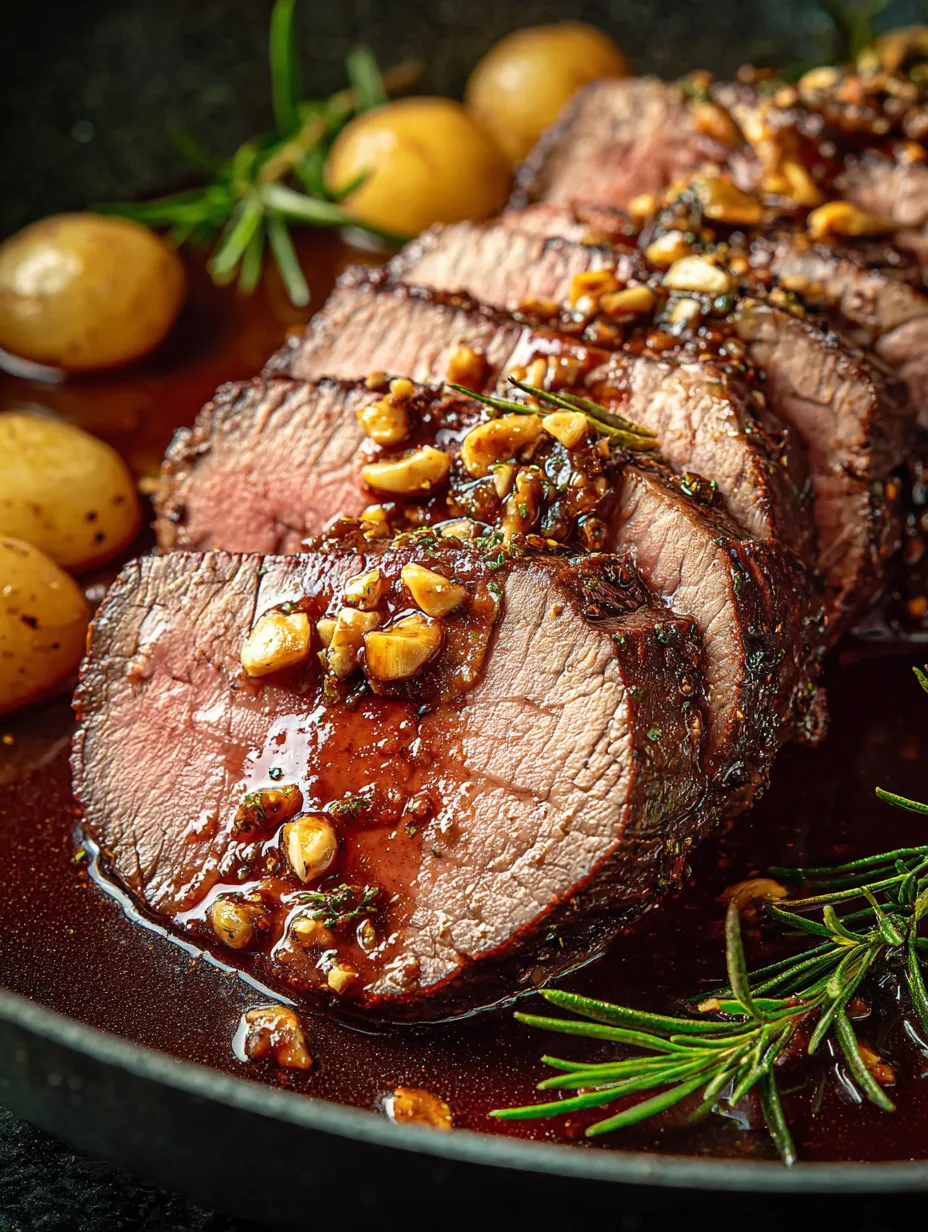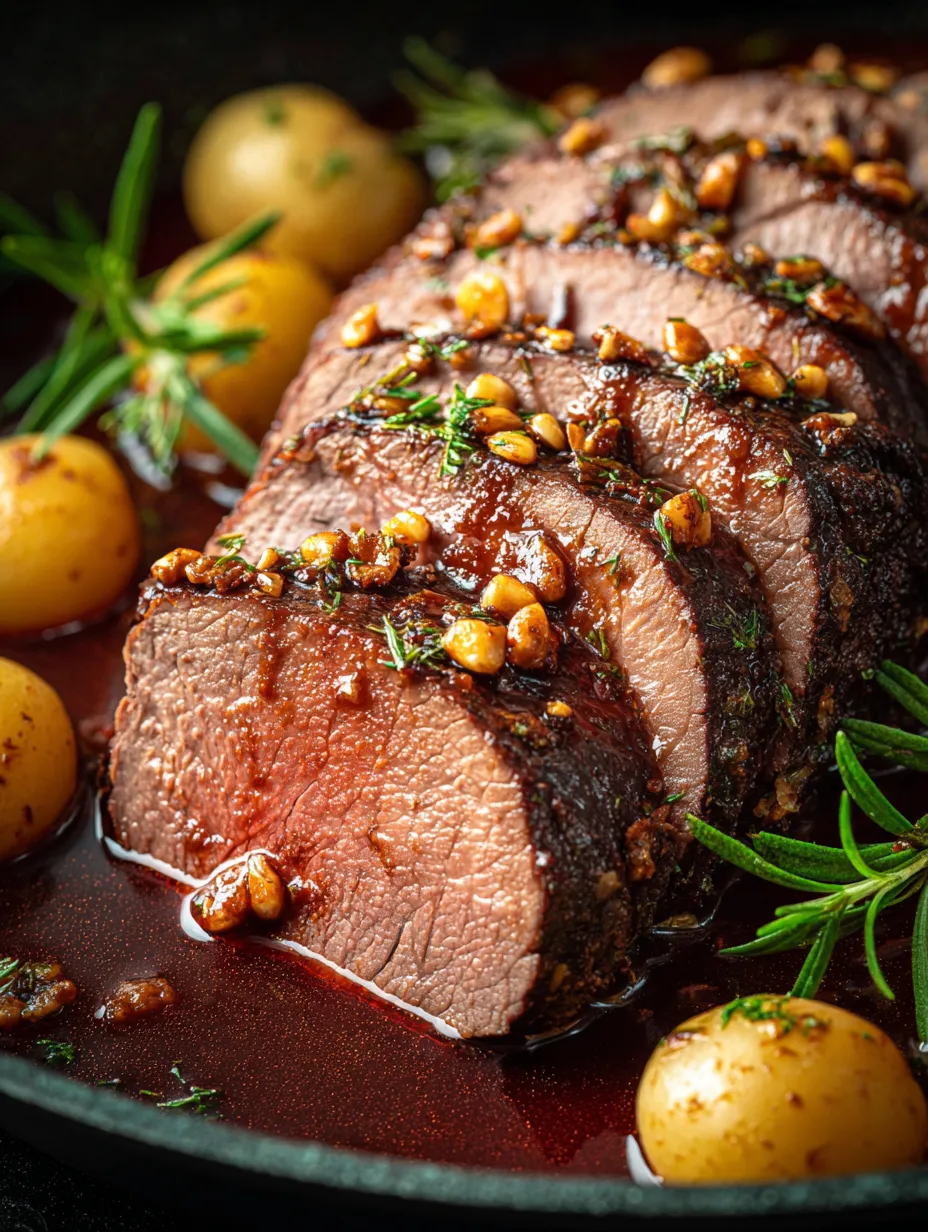 Highlight
Highlight
This old-school German specialty brings tons of rich, tangy flavor right to your kitchen. The bold marinade turns plain beef into a Sunday feast packed with comfort. If you want loads of flavor from traditional homey food, you're in the perfect place.
I still think about the first Sauerbraten night at my grandma’s, the amazing sauce and juicy meat basically made every family get-together since way better.
Ingredients
- Beef roast (round or chuck): this is the flavorful cut that really soaks up the marinade Choose a nicely marbled piece for awesome results
- Onions: chop them chunky for sweetness and depth Go for firm, fragrant ones
- Carrots: add color and a bit of sweetness Only get fresh, crisp carrots—they really make a difference
- Celery stalks: keeps things savory and earthy Grab local celery for the best taste
- Red wine vinegar: brings bright zing Pick a quality vinegar with a bold smell, skip the artificial extras
- Dry red wine: gives full-bodied richness Use one you’d also want to sip
- Bay leaves, cloves, allspice, juniper berries: can't skip these for that classic flavor Always go for whole berries and leaves
- Peppercorns: give just a little tingle
- Fresh ginger or spice cake (crumbled): adds mellow sweetness with a light bite Go for gingersnaps or homemade gingerbread if possible
- Butter for browning: gives you a tasty crust and glossy sauce Really fresh butter is best, if you can get it
- Sour cream: stirs in at the end for a creamy finish Try the extra thick kind
- Salt: brings all the flavors together Good sea salt really pops
- Beef stock or broth: makes the base for the gravy Strong homemade broth is always best
Step-by-step guide
- Get going on the marinade:
- Start by quickly chopping celery, carrots, and onions. Dump those with red wine, vinegar, bay leaves, cloves, allspice, juniper, and pepper into a pot. Let the whole thing gently simmer about ten minutes to build flavor. Let it cool off before moving on.
- Time to marinate the beef:
- Stick your beef roast in a big glass or ceramic dish. Pour the cooled marinade all over it—the meat should be totally covered. Pop a lid on and let it rest in the fridge at least three days. Flip the meat every day so it gets an even soak.
- Brown that beef and slow cook it:
- Pull the meat out of the marinade and pat dry. Strain the marinade. Sear the roast in hot butter inside a Dutch oven or heavy pot till the outside is nice and caramelized. Throw in the marinade veggies, give them a quick toss. Pour in about half the strained marinade and add the beef broth. Cover and let it gently simmer for two to three hours, turning the roast now and then.
- Finish the gravy:
- Once the beef is super tender, take it out and keep it warm. Strain the sauce, then heat it up again. Toss in crumbled gingersnaps or gingerbread, stirring until the sauce thickens and gets that sweet note. Whisk in sour cream, then season with salt and pepper until it tastes awesome.
- Slice and enjoy:
- Cut the beef into slices and smother it in gravy. Serve it up with red cabbage and potato dumplings for the real German experience.
 Highlight
Highlight
Good stuff to know
This dish gives you plenty of protein and fiber from the beef and veggies. Leftovers keep great in the fridge and actually get better the next day. The magic happens from letting it marinate forever, then slow-cooking. My favorite part? Tossing gingersnaps in the gravy. It always reminds me of sneaking cookies as a kid while the house smelled amazing from the stove.
Storage tips
You can stash extras in the fridge for a couple days—nobody will notice. Always reheat gently on low so the meat stays juicy, or freeze it in little batches for later. Freeze sauce on its own for that smooth, silky texture.
Ingredient swaps
No beef handy? Try pork shoulder, venison, or even duck leg. Red wine out? Use dark grape juice with a shot of vinegar if you want it alcohol-free. No gingerbread? Swap in bold speculoos cookies instead.
 Highlight
Highlight
Serving ideas
It's best with classic sides like potato dumplings, spätzle, or red cabbage. Want it fancier? Add some steamed Brussels sprouts. A fresh green salad balances out the rich gravy, and a glass of bold red wine—or a German beer—makes it perfect.
Background and tradition
This meal goes way back to medieval Germany, where they used wild game in fall and you’d smell festive spices in the air. It’s still the go-to for family holidays like Christmas or birthdays. Everyone tweaks it to make it their own and the method gets handed down through the years.
Recipe FAQs
- → What's the best cut of meat for making Sauerbraten?
People usually go with beef round or bottom round. They get super soft and flavorful once soaked in marinade for a few days.
- → How long do you really need to let Sauerbraten marinate?
Give it at least three days, though five is better. That's how the flavors really get into the meat and it turns out nice and bold.
- → What's behind that tangy taste everyone loves?
You get that classic zing from vinegar, red wine, bay leaves, cloves, and a bunch of tasty spices swimming in the marinade.
- → How do different places in Germany tweak this dish?
In the Rhineland, folks toss in raisins and sugar. Bavaria likes it extra tangy with more vinegar and spices. Swabia often goes for a splash of local red wine.
- → Which sides really work well with Sauerbraten?
Soft potato dumplings, buttery spaetzle, and sweet-sour red cabbage all soak up the saucy goodness and balance out the flavors.
- → How can you make the gravy extra rich and smooth?
Crushing up gingerbread or spiced cookies into the pot makes the sauce thicker, a bit sweet, and smack full of flavor.
Classic Sauerbraten Germany
Get to know Sauerbraten: tender beef, bold spices, tangy marinade, and favorite sides that make it extra special.
Ingredients
→ Seasoning Mix
→ Sauce Bits
→ Beef and Marinade
Steps
Slice the meat against the grain and spoon sauce over the top. Red cabbage and potato dumplings go great on the side if you want.
Pull the beef out and keep it warm. Run the braising liquid through a strainer, skim off extra fat, and let it bubble away until it's about a third less. Toss in the gingerbread, stirring until things get thick. At the end, stir in the sour cream and tweak the flavors until they're just right.
Pour the strained marinade and beef broth into the pot with the meat. Pop on the lid and cook in a hot oven at 165°C fan for 2 and a half to 3 hours, or until a fork goes through super easy.
Melt butter in your big roasting pan or Dutch oven. Sear the whole beef on every side over high heat, about 3–4 minutes each, so it gets a tasty crust.
After marinating, pull the beef and pat really dry with paper towel. Give it a good sprinkle of salt and pepper. Run the marinade through a mesh strainer and save it.
Drop the trimmed beef into a large glass or ceramic dish. Pour over your cooled marinade so the meat's fully covered. Cover up and chill in the fridge for 3 to 5 days, flipping the meat every day.
Bring red wine, vinegar, water, onions, carrots, celery, plus all your spices to a boil in a big pot. Let it simmer gently for 5 minutes, then cool it off completely.
Notes
- Marinating this long makes even cheaper beef super tender and gives it that deep classic flavor.
Required Equipment
- Big roasting pan with a lid
- Large glass or ceramic container
- Mesh strainer
- Paper towels
Allergen Information
Double-check every ingredient for potential allergens and consult a healthcare professional if unsure.
- Has gluten (from gingerbread/cookies); and dairy (from sour cream, butter)
Nutritional Information (Per Serving)
This data is for informational purposes only and doesn’t replace medical advice.
- Calories: 569
- Fat: 27.4 g
- Carbs: 21.5 g
- Protein: 54.2 g
